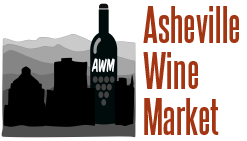
The history of fortified wine dates back to ancient times when wine was often flavored with various herbs, spices, and other botanicals to help preserve it. One of the earliest known examples of fortified wine is the ancient Greek wine known as rekt, which was made by adding resin to the wine to help preserve it.
The modern practice of fortifying wine with a distilled spirit, such as brandy or port, began in the 17th and 18th centuries. While this was primarily done to preserve wine during long sea voyages, it was also done to add flavor and increase the alcohol content.
Fortified wine is regularly produced in most wine regions worldwide and most famously in Portugal, Spain, Italy, and France. The most well-known types of fortified wine include Port, Sherry, Madeira, Marsala, and Vermouth. These wines feature unique production methods and flavor profiles; each is considered classic examples of the genre.
Port
A sweet, red wine from the Douro Valley in Portugal, made from a blend of indigenous grapes, including Touriga Nacional, Touriga Franc, Tinta Barroca, Tinta Roriz, and Tinta Cao. The grapes are crushed and fermented in tanks or large vats, and then a small amount of brandy is added to the wine to stop the fermentation process. The wine is aged in oak barrels before bottling and further aged in the bottle before release.
Sherry
A dry, semi-sweet, or dessert-style fortified wine from the Jerez region of Spain, it is made from white grapes, such as Palomino, Moscatel, and Pedro Ximenez. After fermentation in tanks, the wine is aged in a solera system, which involves blending wines of different ages. The solera system consists of a series of barrels, with the oldest wine at the bottom and the youngest at the top. As wine is taken from the barrels for bottling, it’s replaced with the younger wine from the barrel above it.
Madeira
A sweet, fortified wine from the island of Madeira off the coast of Portugal. It’s made from various indigenous grapes, including Sercial, Verdelho, Bual (aka Boal,) and Malmsey (aka Malvasia.) The grapes are crushed and fermented in tanks or vats before aging the wine in oak barrels or tanks. The barrels or tanks are heated to a high temperature to simulate the effects of a long sea voyage, emulating the way Madeira was shipped in the days of the clipper ships.
Marsala
A fortified wine from the region of Marsala in Sicily, Italy. It’s made from a blend of white and red-skinned grapes, including Grillo, Catarratto, Inzolia, and Nero d’Avola. After fermentation, a small amount of brandy is added to the wine to increase the alcohol content. The wine is then aged in oak barrels for an extended period before being bottled.
Vermouth
A fortified wine flavored with herbs and spices. It is made from white or red wine and is most famously used in cocktails. Vermouth is produced by infusing wine with various herbs, spices, and other botanicals. The ingredients are left to macerate, and before bottling, the wine is sweetened, and a small amount of brandy is added to increase the alcohol content. Most Vermouth is made in Italy, Spain, or France; however, countless variations are found locally in most wine-growing regions across the globe.
Fortified wine is best enjoyed either chilled or at room temperature, depending on the type of wine. Port and dessert-style Sherry, for example, is best served at room or cellar temperature, while the very dry styles of sherry are best enjoyed chilled.
Sweet dessert styles of fortified are traditionally enjoyed as an after-dinner drink; however, there are many delicious food pairings to explore as well. Port is often paired with chocolate desserts, while dry sherry can be enjoyed with nuts, cheese, olives, and Tapas. Many styles of Madeira are a terrific choice for roasted meats or stews, and Marsala pairs well with rich, savory dishes like risotto or roasted vegetables. Vermouth is often used as an ingredient in cocktails; however, it takes just one trip to Spain to discover the joy of Vermouth on its own as an aperitif.
Much like regular wine, there’s a fortified wine for every palate. Next time you visit the shop, ask for a personal tour of our current international fortified wine selections.
